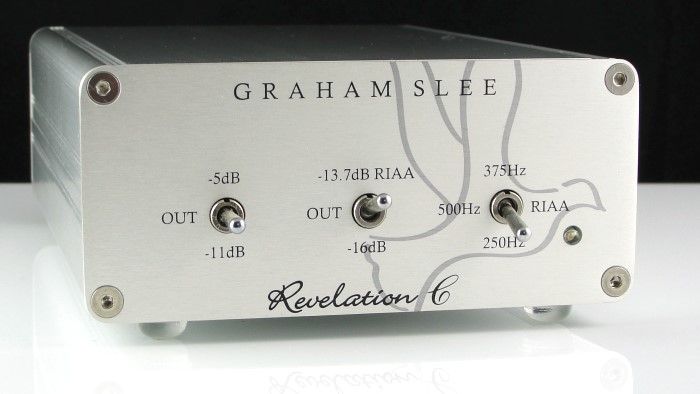@dogberry I have about two hundred mono LP’s myself. Folkways, Archive Productions, Mylodia, etc… and remasters. Some 1950’s vinyl I’ve bought still has shards of vinyl along the edges from when they were cut. There is a treasure trove of mono out there, I honestly believe I’ve barely scratched the surface in my record collecting endeavors. I’m looking for a local professional record cleaning service, given the age of many of the originals I’ve purchased.
Mono Cartridge Question
You chaps have watched me struggle with the issue of my London Decca Reference being irreplaceable, and then joyfully learning that John Wright has a successor after all. You have seen me buy and test three other MI designs (Nagaoka MP-500, Grado Statement3, Soundsmith Sussurro MkII) along with my older MC cartridges (Ortofon Kontrapunkt C and Benz Micro Ruby 3). Since those struggles have led me to owning two SME turntables and four tonearms, I am now torturing myself with the question of whether one of those four should be home to a dedicated mono cartridge. Remember, I only have one ear and cannot hear stereo at the best of times. A mono cartridge for my few dozen mono recordings would be a matter of reduced surface noise and possibly some improvement in dynamics.
I can get hold of an Ortofon Cadenza Mono (two voice coils so not true mono) for about 1600CDN, and a Miyajima Zero for 3450CDN. So the question is this: am I mad to even think about it? Money is not what it once was before I retired. There is no opportunity to go and hear these before purchase, without spending much more than purchase price on travel.
Shall I "make do" with my rather good stereo carts for my mono LPs or is there something better waiting for me when I get out those Parlophone Beatles LPs?
- ...
- 80 posts total
I think you have this backwards. If you trust Namiki/Orbray, the fine line/micro-ridge/Replicant type profile has the largest contact patch size and the elliptical the smallest with the conical coming in with a slightly larger contact area of the elliptical but still 1/2 that of a microridge.. dave
|
FWIW, for the past 20 years Lyra has been making mono cartridges with vertical compliance (but no ability to convert vertical motions into electrical signals) and line contact styli of similar dimensions as a microridge (the contact radii of our stylus measure 3um x 70um). I will add that for a few decades our cartridges have possessed neither polepieces (conductive or not) nor any body structure in the vicinity of the signal coils, with both features being targeted at the banishment of eddy currents. |
@jcarr I was wondering if and when you would make your presence known, glad you’re back! Since you joined the conversation back in the day, several other cartridge manufacturers have created a mono cartridge of their own. One that stands out in my mind is the Hana SL Mono for $750.00. This is a pragmatic option due to its affordability. I know the Lyra cartridges are excellent and I’m guessing that the mono cartridges have made advancements over the years. For the large majority of audio enthusiasts, price is a factor. Especially if mono records amount to just a fraction of one’s entire collection. So to get some of the Lyra magic in a mono cartridge, what’s the price point? |
@pryso +1 regarding your comment: Nearly all mono reissues were made with stereo cutter heads with smaller size. I don't believe few if any mono cutter heads survive. I assume from this mono reissues may be OK with current stereo cartridges, although a mono switch (per Lew) may still help sonics. But with original mono releases a mono cartridge with appropriate tip size should optimize the enjoyment. I had the opportunity to acquire a collection of around 900 mono records, most of them in near mint condition (half of them are real mono, the rest are mono reissues) I started with Ortofon 2M Mono and a MM phono preamp for the real mono recordings. To my ears it was ok but not more. For the reissues I am using the Orfoton Cadenza Red with a separate tt as stereo cutter heads have been used. Then I decided to to a step further and purchased a Cadenza Mono and a Graham Slee Audio Revelation MC for the real mono recordings https://www.hifisystemcomponents.com/phono-preamps/revelation-mm-revelation-mc-archival-phono-preamps.html Connecting only one cinch plug from the TT's phono cable and fit the other entry with a 'dummy' cinch plug (As per advice of Graham Slee). I reckon that the possibility to choose from different EQ settings are making a big difference for early FFR recordings (pre 1953) and FFR recordings. The different EQ settings will allow you to obtain a good tonal match to what the the original sound would have been on 78 rpm records, vinyl LPs and EPs https://www.hifisystemcomponents.com/about/reproducing-old-records.html IMO, the 2.5k investment in the Cadenza Mono MC and the preamp was a very good one. Coming closer to listening to real-real mono would probably be using one speaker only? However, I do get wonderful soundstages from the old recordings using both speakers. I'm happy to get any comments from you mates on how to improve mono listening even further. Cheers, eagledriver
|
- 80 posts total


